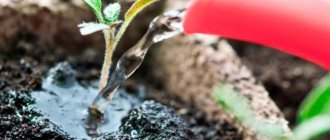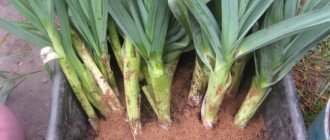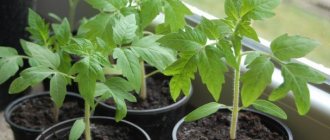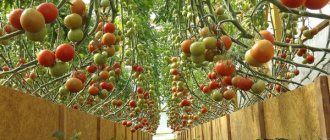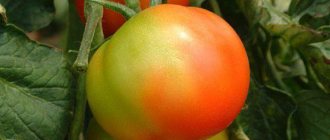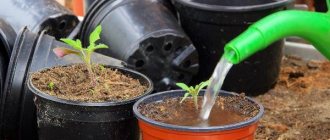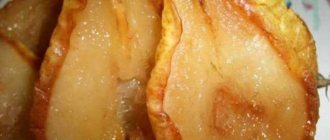Is it necessary to pollinate tomatoes in an apartment?
Dear friends, let's figure out whether it is necessary to pollinate tomatoes in an apartment. Under natural conditions, pollen is carried by insects or wind. Specimens growing indoors are deprived of such conditions, which means they need help.
If you miss the moment of pollination, the tomato inflorescences will fall off and few fruits will set. The work of growing and caring will be in vain.
Bush with partially fallen inflorescences
If you haven't planted tomatoes yet, check out the information on growing tomatoes on your balcony.
If tomatoes are not naturally pollinated
The tomato harvest depends on the number of ovaries on the stalks after the plant blooms. Pollen is formed on the bushes, which fertilizes its own and neighboring flowers. Tomatoes are pollinated by wind and insects.
Such processes are also possible in a greenhouse or loggia: just ventilate the room in warm weather, and in hot weather do not close the doors at all. If this is not enough, artificial pollination is carried out, which will be discussed in detail below.
Looking for the cause of the problem
The tomato flower has a pistil and produces its own pollen, unlike plants that are cross-pollinated and have either stamens or pistils.
For proper formation of fruits during the flowering period, a suitable indoor microclimate is necessary. Before pollination, it is necessary to create appropriate conditions, since flowering without intervention does not guarantee the formation of all ovaries.
Vegetable growers often encounter the fact that flowers fall off or do not form ovaries at all. There are several reasons for this phenomenon:
- light deficiency;
- damage to plants by infections and diseases;
- lack of nutrients;
- excess fertilizer (chicken manure, manure or nitrogen);
- the formation of a large number of empty flower buds;
- using your own seeds when planting tomatoes: F1 type hybrids are not grown from seeds collected in the garden.
When growing tomatoes indoors in early spring or winter, it is difficult to organize conditions for self-pollination of plants (constant ventilation and the presence of insects). In order not to expose the crop to the risk of infertility, vegetable growers carry out timely pollination of tomatoes artificially, having previously provided the plant with an optimal microclimate.
Pollination conditions
Dear gardeners, the tomato is a monoecious plant, that is, the pistils and pollen are found in the same flower. This means that a tomato can self-pollinate if favorable conditions are created.
Look in the table what is important to obtain 100% ovary and what conditions are needed for pollination.
| Pollination conditions | Optimal | Invalid |
| Temperature | from 15 to 30 | Below 15 - the flower is deformed; above 35 - the peduncle is sterilized. |
| Air humidity | 60-70% | Below 50% - ripe pollen dries quickly and scatters; above 70% - pollen becomes heavier and cannot move. |
| Agrotechnical | Strong and developed plants | Fattening bushes produce small inflorescences, putting their energy into landscaping. The weak ones cannot be tied, there is not enough strength, so I remove the first lower brushes. |
We have studied the conditions, see what to feed the tomatoes on the balcony to get a healthy plant suitable for pollination.
Natural method
The more flowers are pollinated, the more generous the harvest will be given to gardeners. For this it is necessary to create favorable conditions. The plant must be well illuminated by sunlight, the room must be regularly ventilated, and watering must be proper.
The number of pollinated flowers should be maximum to get a good harvest. It is necessary to select varieties of tomatoes that grow well at home.
Pollination methods
As I found out, there are 2 types of pollination of tomatoes indoors - natural and chemical. I will consider with you how to pollinate tomatoes on the windowsill, and decide which is the most effective method.
Natural pollination
Natural pollination is divided into natural and artificial.
Natural
The natural option is when the breeze sways the branches and pollen moves from one flower to another.
How I organize:
- I open the windows, creating a draft in warm weather.
- If it is below 15 degrees outside, then I place the fan at a distance of 50 cm from the bush.
- In both cases, the branches sway and scatter pollen over all the buds.
Artificial
When the ovaries do not turn out naturally, I do artificial pollination and use mechanical actions to help the bushes pollinate the buds.
How I pollinate:
- I shake the bushes a little or tap the brushes with a stick, the pollen falls and the stamens are pollinated.
- I apply an electric toothbrush to the flower and collect pollen, spreading it to neighboring flowers.
Using a watercolor brush with soft bristles, I collect pollen with rotational movements and transfer it, like a bee, to other inflorescences.
Do you pollinate tomatoes with a toothbrush?
Not really
Chemical pollination
Friends, I am not a supporter of using chemicals when growing, but the results are amazing - the yield increases. I’ll tell you about ways to use ovary stimulants.
Spraying and dipping
During flowering in the morning, I irrigate the buds with a stimulant solution, trying not to get it on the young leaves.
How to dilute:
- I dilute the drug “Ovary” 1 g in 500 ml of warm water. I apply the composition with a sprayer to all flowers and ovaries 2 times: when the tomato bloomed and when it began to bloom.
- In between, I spray boric acid once (1 g + 1 liter of water).
Do you use the “Ovary” preparation for pollination?
Not really
There is a synthetic drug of a new generation of stimulants “Tomato”. I dilute 1 ml of the drug in 0.5 liters of water, add 1 drop of liquid soap to the mug, mix and dip the blossomed buds in the solution.
Author's note
Natalia Papanova
Blog author
I use the “Tomato” stimulator only once a season.
Watch the video on why you should remove the crown flower.
Having decided on pollination on the windowsill, get ready for summer and find out how to pollinate tomatoes on the balcony.
Humidity and thermal conditions
The microclimate of the greenhouse is of great importance for pollination. In order for tomato fruits to set well, you need to avoid waterlogging and high temperatures. Usually at +30, pollen loses viability; some varieties successfully withstand +34. After the +35 mark, regardless of the type of tomato, it becomes sterile.
Temperature in the greenhouse is the main factor influencing the number of ovaries
It is important to know that during the flowering period, even if the mark +35...+40 is briefly exceeded, the peduncles may be shed and, accordingly, the yield may decrease. At +13...+15 and below, the stamens begin to deform, which leads to a decrease in the quality of pollen. High humidity also negatively affects pollination
If the mark exceeds 70%, then the pollen is unsuitable for fertilization. It loses its ability to fly apart and becomes dense and stuck together. That is why the greenhouse must be constantly ventilated, especially after watering. It is advisable to have vents that promote active outflow of moisture and through air movement. Natural pollination of tomatoes This option does not require much effort; it is enough to arrange ventilation, which allows you to attract insects and arrange air circulation. If you open doors/windows from opposite sides, a draft appears. This helps the pollen to move independently, wake up in the desired places and fertilize the flower. Honey plants planted in the rows help attract bees, bumblebees and other insects. You can bring several pots of flowers into the greenhouse. By the way, the proximity of basil and marigold improves the taste of ripe tomatoes. Artificial pollination
High humidity also negatively affects pollination. If the mark exceeds 70%, then the pollen is unsuitable for fertilization. It loses its ability to fly apart and becomes dense and stuck together. That is why the greenhouse must be constantly ventilated, especially after watering. It is advisable to have vents that promote active outflow of moisture and through air movement. Natural pollination of tomatoes This option does not require much effort; it is enough to arrange ventilation, which allows you to attract insects and arrange air circulation. If you open doors/windows from opposite sides, a draft appears. This helps the pollen to move independently, wake up in the desired places and fertilize the flower. Honey plants planted in the rows help attract bees, bumblebees and other insects. You can bring several pots of flowers into the greenhouse. By the way, the proximity of basil and marigold improves the taste of ripe tomatoes. Artificial pollination
It is simple to determine the state of the peduncle for fertilization: a pollinated flower demonstrates its state with its petals bent back. If this does not happen after the start of flowering, it is time for your action - hand pollination.
It is known that pollen ripens at night, so the pollination process must be carried out in the morning. In hot weather, this should be done early, before the peak of maximum temperatures occurs. The “operation” is carried out continuously while flowering is in progress, the interval is every other day. There are several methods of artificial pollination.
Pollination of tomatoes in a greenhouse (video)
It must be remembered that an overdose of stimulants and fertilizers leads to the opposite effect. If you correctly follow the rules, proper care and instructions for artificial pollination of tomatoes, then a good harvest is guaranteed.
Set fruit is the result of successful pollination
Growing tomatoes in a greenhouse gives excellent results only if certain mandatory procedures are followed. One of them is flower pollination, without which the formation of ovaries is impossible.
Hand pollination, methods for different types of plants
Pollination techniques for cucumbers
In case of bad weather (average daily air temperature 14-16°C) and the absence of bees, pollination processes are significantly
To prevent this from happening, you need to pick the opened barren flower, remove the petals of the corolla and, carefully touching
The technique is also used on zucchini, pumpkins, and squash. Each female flower must be pollinated by one or two
In the afternoon, all pumpkin flowers close. The male ones fade the next day. How successful the pollination was can be seen in a few days: the fruit will begin to grow or die. If pollination fails the first time
How to avoid delayed fruit formation
Therefore, when it gets colder, you should try to increase the temperature by 1-2°C where vegetables with predominantly male flowers grow. In the case of a north wind, they provide protection in the form of screens, plant curtains,
Attracting beneficial insects to the garden is also our task. The flowers are sprinkled with honey, honey plants are planted around the beds - clover, mint, borage (borage), various onions, physalis, broccoli, mustard. They attract insects not only with pollen and nectar, but also with the color of the corolla and aroma.
bestgardener.ru
- Tomatoes greenhouse care
- The best varieties of tomatoes for central Russia
- How to sow tomato seeds
- How to pick tomatoes and peppers
- Planting tomatoes in a greenhouse
- Growing tomatoes in Siberia in greenhouses
- Hardening of tomato seeds before planting
- How to water tomato seedlings
- Tomato seedlings grow poorly, what to do
- Growing tall tomatoes in a greenhouse
- Tomato seedlings watering
- Grow tomato seedlings
- White filling tomato when to plant
- Why do tomato seedlings stretch?
- The best varieties of early tomatoes
- How to treat tomato seeds before planting
Favorable conditions are the key to the development of good ovaries
Careful pollination, fertilizing, eliminating pests - not a single measure will be effective if tomatoes grow in poor conditions. The culture requires little - optimal temperature, average humidity and a lot of sun.
To create the required conditions, you need to frequently ventilate the room, monitor the humidity, which should be within 70%, and maintain the temperature at least +22 C. Also, for tomatoes to grow, it is necessary to apply fertilizers with potassium on time, and use growth stimulants. All mixtures are available in ready-made form in gardening stores.
In greenhouses, the canopy should be raised from time to time, and the doors should be opened in greenhouses. The humidity level is regulated by watering, and mulching will help retain water in the soil.
How to pollinate tomatoes correctly
Without pollination there will be no harvest. In a greenhouse, the requirements that help the plant to pollinate and form fruits are not always met. In order for a crop to successfully form fruit ovaries, it requires special conditions.
Flowering and pollination characteristics of tomatoes
Tomatoes in a greenhouse bloom and pollinate only if the following conditions are met:
- Watering the bushes is done only at the root;
- the soil is moistened infrequently, but abundantly (2 times a week, 3 liters of water per plant);
- loosening is carried out at least 2 times a month;
- after each watering, the soil is mulched with peat or humus;
- air humidity is not lower than 60% and not higher than 75%;
- the air temperature in the greenhouse is not lower than +18 and not higher than +30 ° C.
On a note. The optimal conditions for growing tomatoes in a greenhouse were determined practically. Their organization requires effort, but it will not be in vain, but on the contrary, it will lead to a bountiful harvest.
A little theory
The answer to the question “who pollinates plants?” very simple: tomatoes themselves produce pollen and pollinate neighboring flowers with it. Under normal conditions, they are pollinated by wind and insects. In greenhouses this is done through ventilation and, of course, manually. In this case, you independently transfer pollen from one plant to another.
Did you know? The largest tomato weighed 2.9 kg. It was grown in the state of Wisconsin in the USA.
Why pollinate?
Pollination of tomatoes in a greenhouse is a process that determines how many fruits will ripen as a result. It directly affects the future harvest. This procedure is performed if the plants cannot pollinate themselves, for example, in the cold season, when there are no insects and you cannot open the windows for ventilation.
Deadlines
When choosing the time for pollination, pay attention to the weather, because on a rainy or humid day the process will be much worse. Carry out pollination during the period when there is sun, preferably every 3-4 days. Water the soil immediately after this, and after 2.5–3.5 hours, open the windows and doors to allow air to circulate.
The necessary conditions
In order to efficiently pollinate plants in a greenhouse, it is necessary to monitor the air temperature and humidity levels. By the way, this is a plus for greenhouses - outside the greenhouse you will not be able to maintain optimal temperature and humidity levels.
Important! The temperature should not be allowed to rise above 30–40 °C. Even if this is allowed to happen for a short time, the flowers may fall off and your harvest will be lost as a result.

